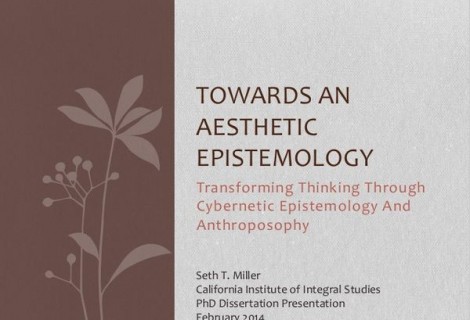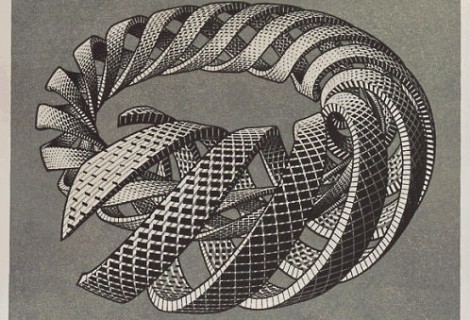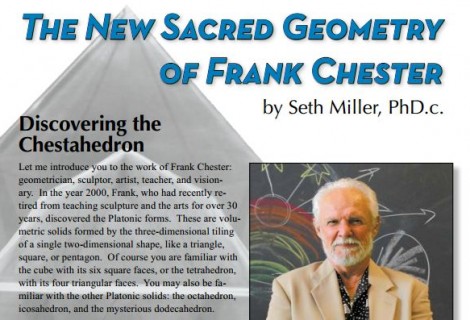An Esoteric Guide to Spencer Brown’s Laws of Form #1
« Previous Page | 1 2 3 4 | View All | Next Page »
LoF p. xxiii
- What is encompassed, in mathematics, is a transcendence from a given state of vision to a new, and hitherto unapparent, vision beyond it. When the present existence has ceased to make sense, it can still come to sense again through the realization of its form.
Mathematics, as a spiritual activity, can change the way we see; it can help us transform spiritually. GSB is implicitly indicating something that is found in many esoteric traditions: that there are many ways of viewing the world (and ourselves in the world), but that not all views are equivalent, nor can they all be relativized at the same level (Wilber’s “Flatland”). Rather, there is structure to be found in the various views, and the structure is significant with respect to the content of the view itself. I’m just restating GSB’s quote in different words. The important thing here is the distinction between thecontent (GSB’s “sense”) and the form of the content. The reason why things change from being senseless to sense-full has to do not with the change at the level of the content, but a change at the level of form. THIS is the key that is the treasure. It is not enough to “think different” — we must think differently, in a new way. Herein lies the power of mathematics as part of a spiritual discipline: its ability to transform our capacity to see, not simply what we see.
LoF p. xxiv
- In general, the more universal the law, the more it seems to resist expression in any particular mode.
When speaking of universal law, we can recognize what is meant esoterically by the word “archetype”. The principle that GSB relates here is in accord with the features of the archetype, conceived in general (we could say, the archetype of archetypes). The more we attempt to encompass it in particulars, the more it squeezes through the cracks and eludes our grasp. This is in obvious relation to the previously discussed limitations of language.
What is interesting, esoterically, is that this inverse relation is a general characteristic of the boundary between the physical and spiritual worlds. It is something like Heisenberg’s Uncertainty Principle: you can’t pin down both the nature of an archetype and its manifestation at the same time, and you can swing (depending upon how you draw your distinctions) more towards the side of exactitude or more to the side of generality. Alchemically, this is a manifestation of the Air principle (see https://spiritalchemy.com/p6-metaphors.html), and is a state that we will encounter again and again on our journey.
On a more mundane note, this polarity has long been with us in the form of the tension between induction and deduction. Historically these views were championed by Plato (induction) and his pupil, Aristotle (deduction). If you are a Platonist at heart you will have the feeling that the generalities are somehow more real than the particular, while if you are an Aristotelian at heart you will feel that the particulars are more real than the generalities, obviously.
The point is that both are correct, and neither are complete. I would suggest, in this vein, the introduction of the process of abduction, championed by Charles Sanders Peirce, which is another form of reasoning that is perpendicular to both induction and deduction, and which fleshes out a logical “space” that allows it to slip very well into the palm offered by esoteric methods.
In the preface to the 1994 edition of the Laws of Form, Spencer-Brown explains the ground of the work, which is “the point” so to speak (sorry, I don’t have the page numbers):
- All I teach is the consequences of there being nothing. The perennial mistake of western philosophers has been to suppose, with no justification whatever, that nothing cannot have any consequences. On the contrary: not only it can: it must. And one of the consequences of there being nothing is the inevitable appearance of “all this”.
- The idea that the creation must be a consequence of ‘something’ is moronic. No thing can have any consequence whatever. If there were originally something, it would poison the whole creative process. Only nothing is unstable enough to give origin to endless concatenations of different appearances.
Obviously GSB is getting into territory that has a long esoteric history, beginning at least as far back as the ancient Greek’s identification of Chaos as the mother of Gaia, and thus the source of the difference between the Heavens and the Earth, the Above and Below. Now, things can get really interesting and complicated here very quickly, because we are being taken into pretty deep territory with these claims about nothing and something. But we have to go there because GSB’s essential insight, that nothing cannot NOT have any consequences, is very important, as he is making a fundamental metaphysical, cosmological, epistemological and esoteric point all at the same time, and indeed (as he indicates) this is actually the only thing he is trying to communicate, so it bears some scrutiny.






Thanks for posting this!